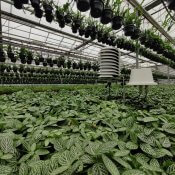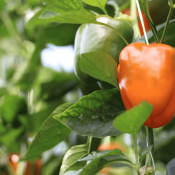Smart sensing is not about sensors
Okay, not solely about them.
When people ask me what’s surprised me most about working in agritech, my answer is always the same: I had no idea how innovative the sector is. I’m noticing that the portrayal of agriculture is changing recently, but overall, I had no idea how ahead of the curve, and how receptive to new technology growers are, and I don’t believe they necessarily get the credit for it.
As I tend to mention fairly frequently, the company I work for makes technology to help growers be more efficient, sustainable and productive using insights from the physical world. Our shorthand for this is “smart sensing tech.” Our technology— our sensor portfolio, our platform roadmap, and quite frankly our understanding of ourselves as a company— evolves with the needs of our customers. And we know that to really serve our customer base (agribusinesses), we can’t be an island. Many customers are already working with some sort of agritech.
(More often than not, that existing technology is a climate computer)
So what’s our role? Rather than reinventing the wheel, we want to make that wheel more effective, more efficient, more data driven and better able to respond to quickly and nimbly to change.
If you’ve noticed some of our recent partnership announcements around integrating with climate control systems, it’s this approach that’s at their core.
Build what your customers want
I’ve written about this before, but it’s a fairly simple concept, really. Let your customers set the agenda for your product roadmap. They know their business better than you ever will. Build what they ask for— if they want a feature, a product, a functionality, an integration, it’s pretty darn likely their peers will as well. We’ve added new sensors and new platform functionalities based directly on customer input. But in terms of customer wants, integration with climate control was top of the list. This makes perfect sense. Sensors can capture certain metrics that climate systems can’t, and crop-level granularity that the climate computers can’t offer.
My colleagues often tell the story of a customer who realised that there was a few degree difference in temperature between the top and bottom of his plants, something only crop-level measurement could discover.
Sensing technology can augment the capabilities of climate computers— and by extension augment the capabilities of customers to make better decisions— by adding a new, granular level of data, combining macro and micro insights on crops and environments.
Ultimately, it’s about the data
I know I just said smart sensing tech can augment the capabilities of climate computers. But ultimately it’s not about sensors or specific systems— it’s about augmenting the value of data, and improving the decision making power of those working with it.
By integrating these systems, we’re giving customers more data, more relationships to observe, more patterns to recognize, more metrics to compare and ultimately deeper insights to act upon.
And let’s be honest, no one has time to juggle interfaces (least of all growers). By bringing these data sources together, in one place, we’re making it much more useful.
We all want different things from our data
Teams, and individuals within those teams work with data in different ways. Some people are visual thinkers and need images to keep things tangible, others prefer charts of one kind over another. Different team members might be on the lookout for different relationships between metrics in their data, or have different priorities re: what they monitor. If data is going to empower agribusinesses, it needs to be flexible in how it’s expressed. A usable data platform needs to offer each individual control over how they view the data they need. ZENSIE was designed with this flexibility and usability at its core, and provides this level of flexibility for sensor data, as well as other data sources.
The power of selective sharing
Flexibly presented data (from various sources) can empower your team, but it can also create an effective space for collaboration across organizations. No one operates in a vacuum, and there are probably multiple stakeholders [using the generic term because it varies per context] that any agribusiness interacts with to get things done. You might want a stakeholder to know certain metrics about your crops, or your storage facility, without necessarily opening your entire data vault to them. ZENSIE’s built to enable the sharing specific widgets and dashboards, with varying permissions, outside the company, so you share just enough to facilitate better cooperation.
It’s bigger than sensors
Sensor data plays a big role in helping growers make the most of their resources, cut losses and improve yields— but they’re just one piece of the puzzle. Excellent connectivity, and practical data integration provide agribusinesses with a holistic overview of their crops and environments. It’s bigger than sensors–it’s about giving customers data exactly how they want it.
Joanna Madej oversees product marketing at 30MHz


30MHz is typing… Our extended support team is ready to chat!
At 30MHz we think it’s important that our users can use our platform in an optimal way. At times you may have questions and you would like some help from our support team. Email and our support page filled with helpful articles were your go to’s. But we thought it was time for something extra… ...Read more
New 30MHz connect casing: How we protect your tech
To make sure your dataflow is fully protected, 30MHz introduces a new connect casing: waterproof, dust proof and even resistant to hits. This special shield will last longer and ensure a reliable dataflow from the connected sensor. What does that full protection mean? That’s what we will explain in this article. Watertight: resistant to wetness ...Read more
Smart assistant at work
After the launch of the smart (AI) assistant at GreenTech, the first growers have started using this new feature. The assistant helps them gain insights from their data faster and supports daily decision-making in the greenhouse. Growers report that they use the assistant for: Calculating differences in water content throughout the day Quickly identifying trends ...Read more




